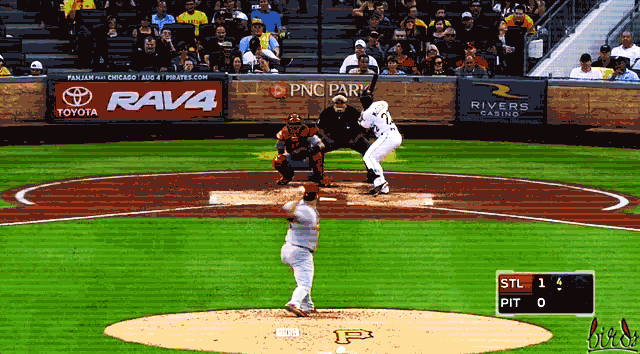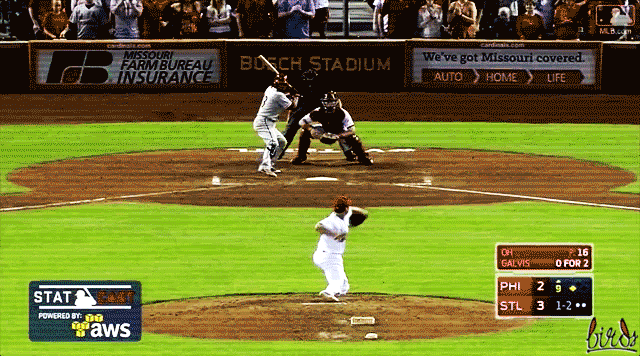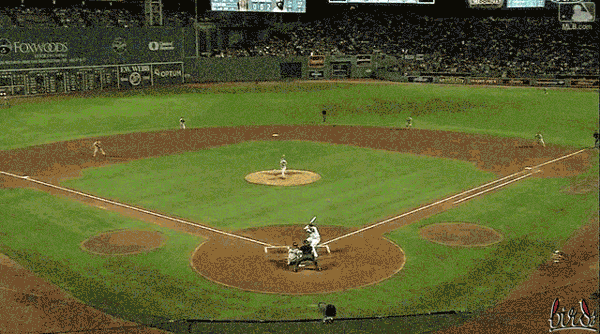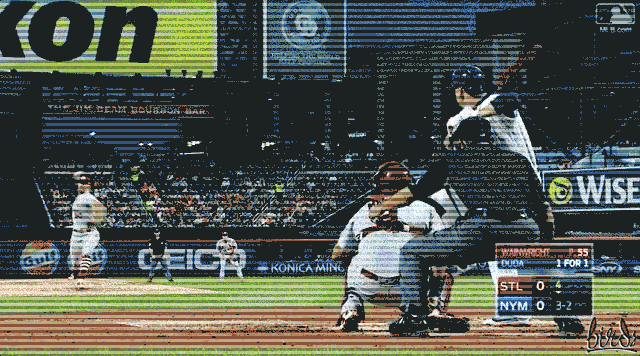
Last week, about a year and six days after telling Matt Carpenter he would be a full-time first baseman, the St. Louis Cardinals informed Matt Carpenter he should prepare for a “super-utility everyday role.” It’s anyone’s guess what that might look like, but it might look something like what we saw from August 29th through the end of the year: Carpenter played in 24 games, appearing eight times at first base, fifteen times at third base, and twice at second base. In two of those games, he played both first and third, and in one he only pinch hit. So, while this super-utility role was billed as something new, it should look familiar.
There are plenty of reasons why Carpenter is on the move. For starters, he’s coming off the worst offensive season of his career. While a 123 wRC+ is still solidly above average, it looks much better at second or third base than first. Add in the emergence of Jose Martinez, who will continue to earn starts at first as long as he’s hitting, and Tommy Pham, who may push Stephen Piscotty to a role similar to that of Martinez, and it’s clear that in order to maximize the potency of the lineup, Carpenter can’t be glued to first base.
For the utility experiment to work, Matt Carpenter needs to be more of an asset with the bat than he is a liability in the field. That’s a pretty safe bet, but it’s not a sure thing. So, I won’t talk about how valuable Carpenter will be now that he’s moving around the field.
We should agree, though, that any player having the versatility to play multiple positions is a good thing. Rosters are limited to 25 players. Usually, that means thirteen position players (or twelve, if you’re Mike Matheny and need a thirteen man pitching staff). One of the bench guys is a catcher who probably can’t do much else. That leaves the other four to serve as the primary backups for seven positions. The more one player can do, the more the other players can specialize. Additionally, being versatile in the field allows the manager to be more versatile implementing a lineup and exploiting platoons. Teams with more versatile players are better equipped to handle injuries. Versatility is good.
That said, I dug (a lot) to try to find ways to show how and where roster versatility correlates with value. I wasn’t able to find much. The difference between teams are small, and it’s almost impossible to determine who is deploying players in more positions out of design versus necessity. I couldn’t work with all that data and not make a chart, though, so here’s a pretty useless bar chart:

Looking at this, we see the Cardinals have been in the bottom third of roster versatility under manager Mike Matheny. We’ve all known Matheny isn’t sophisticated enough to adequately deploy a versatile roster, so this makes sense. Of course, I could also show you the data this way, and now the Cardinals are in the top third in terms of roster versatility under the very same Mike Matheny:

So, really, there’s nothing there. You can try to identify trends in either chart, but I didn’t find much. I even compared roster versatility rates to the rate at which teams bat with a platoon advantage – if you have a more versatile roster, maybe you can manipulate the roster to take advantage of platoons.

In Intro to Statistics, when the professor is explaining the correlation coefficient, this is what he/she shows when r=0. No correlation! There's nothing there. Admittedly, though, the Cardinals' red dot isn't where you'd want to be in this chart. The Cardinals employ an above average rate of players at multiple positions while also batting with a platoon advantage at a below average rate. Why that happens, I can't say.
You didn’t come here to see nothing, though. So below, Gifs and I have compiled some of the best* plays from the St. Louis Cardinals most versatile players.
Matt Carpenter
We couldn’t discuss roster versatility without mentioning the Cardinals own Swiss Army knife. Carpenter has played at least 1,500 innings at first, second, and third base in his career and, if you believe the metrics, has been below-average-but-not-horrific at all of three. Here he was this summer showing off his versatility back on the old 2013 stomping grounds.

Somehow, Carpenter was +1 Defensive Runs Saved at second base in 2017. Yes, that's why we don't use small sample size defensive metrics.
Tommy Pham
There’s more to versatility than being a utility infielder. There’s also value in having outfielders capable of manning all three outfield positions. While almost every centerfielder or rightfielder can play left, not every leftfielder can play in center. Not every rightfielder can play in center. And not every centerfielder can play in right! Tommy Pham showed in 2017 he can stick at any of the three.
I don't know how much value a player can add by being able to man all three positions. However, having a left fielder capable of sliding over to center means you can carry an additional corner outfielder. Corner outfielders, even the backup ones, generally have better bats. Pham (and now Fowler) being able to handle center regularly or in a pinch opens up options to get someone like Jose Martinez more at-bats.

Randal Grichuk
Tommy Pham isn't the Cardinals only utility outfielder. Once a centerfielder with a potential Plus+ bat, Randal Grichuk is now finding his role as a versatile fourth outfielder.

Since debuting in 2014, Randal Grichuk's 25 defensive runs saved rank 20th in baseball. In nearly 1,300 career centerfield innings, he's been above average according to both DRS and UZR. In over 700 rightfield innings, his arm rates out as about average. So, while Grichuk's once-tantalizing potential has fizzled, he's still a valuable piece as a utility outfielder with upside.

Jedd Gyorko
Gyorko is more along the lines of a traditional utility man. He is plenty capable of handling first, second, or third base. He can’t really handle shortstop, but you can certainly do worse. Here, while technically still the third baseman (if I’m reading the shift correctly), he makes a terrific play diving up the middle. The hit probability on this ball was 78%, so credit Gyorko with robbery here.

Back at the natural third base position, Gyorko does his best Manny Machado impression, throwing back across his body while falling away from the field. This is an awfully impressive play and makes you wonder why anyone ever thought starting Jhonny Peralta at third base in 2017 was a good idea.

Versatility is good.

What are the chances we ever another 6-4-3 double play with Gyorko and Carpenter on the front end?
Credit to FanGraphs and Baseball Savant for the various stats and data used in this post.

